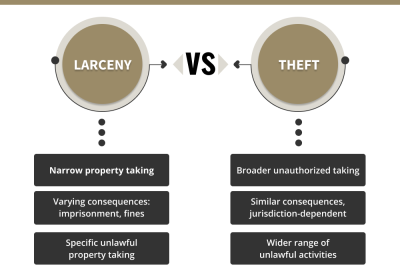
How to Find Volume in a Prism: A Step-by-Step Guide

Understanding the Basics: What is a Prism?
A prism is a transparent optical element that refracts light, resulting in the separation of different wavelengths. Typically, prisms are made from glass or clear plastic and have at least two flat surfaces that are angled to each other. The most common shape of a prism is a triangular prism, which has two triangular bases and three rectangular sides. When light enters a prism, it bends due to the change in speed as it moves from air into the denser material of the prism, allowing for various applications in optics and science.
Key Characteristics of Prisms:
- Refraction: The primary function of a prism is to bend light. This bending occurs because of the change in lights speed as it transitions between different mediums.
- Dispersion: A prism can separate white light into its constituent colors (spectrum) due to different wavelengths refracting at different angles.
- Shape: While triangular prisms are common, prisms can come in various shapes, including rectangular and pentagonal forms, each serving unique purposes in optical applications.
Prisms are widely used in various fields, including photography, astronomy, and telecommunications. In photography, prisms are often used in camera viewfinders to provide a more accurate representation of the scene being captured. In astronomy, they help to analyze the light from stars and other celestial bodies, revealing information about their composition and distance. Additionally, prisms play a crucial role in fiber optics, where they direct light signals through optical fibers, enabling high-speed data transmission.
Understanding how prisms work is essential for anyone interested in optics or related scientific fields. The principles of refraction and dispersion are foundational concepts that not only apply to prisms but also to lenses and other optical devices. By exploring these concepts, one can gain a deeper appreciation for the fascinating behavior of light and its interactions with different materials.
Step-by-Step Guide: How to Find Volume in a Prism
Finding the volume of a prism is a straightforward process that involves understanding the basic formula and applying it to the specific dimensions of the prism. The volume of a prism can be calculated using the formula:
Volume = Base Area × Height
This formula emphasizes that the volume is determined by multiplying the area of the base by the height of the prism. To effectively find the volume, you need to follow a few essential steps.
Step 1: Determine the Base Area
The first step in calculating the volume of a prism is to find the area of its base. The base can be any polygon, such as a triangle, rectangle, or hexagon. Here’s how to calculate the base area for different shapes:
- Rectangle: Area = Length × Width
- Triangle: Area = 1/2 × Base × Height
- Circle: Area = π × Radius²
Once you have identified the shape of the base, use the appropriate formula to calculate its area.
Step 2: Measure the Height of the Prism
Next, measure the height of the prism, which is the perpendicular distance between the two bases. This measurement is crucial, as it directly influences the volume calculation. Ensure that your height measurement is in the same units as your base area for consistency.
Step 3: Apply the Volume Formula
With both the base area and height determined, you can now substitute these values into the volume formula. Multiply the base area by the height to find the volume of the prism. For example, if the base area is 20 square units and the height is 5 units, the calculation would be:
Volume = 20 × 5 = 100 cubic units
Following these steps will enable you to accurately find the volume of any prism, whether it be a rectangular prism, triangular prism, or any other variation.
Common Formulas for Calculating Prism Volume
When it comes to determining the volume of a prism, the fundamental formula is straightforward yet effective. The volume ( V ) of a prism can be calculated using the formula:
V = B × h
In this formula, ( B ) represents the area of the base of the prism, and ( h ) is the height of the prism. This formula applies to all types of prisms, including rectangular, triangular, and hexagonal prisms, as long as the base area is accurately calculated.
To find the volume of different types of prisms, it is essential to determine the area of the base shape. Here are the formulas for calculating the area of some common bases:
- Rectangular Prism: For a rectangular base, the area ( B ) is calculated as:
( B = l × w ) (where ( l ) is the length and ( w ) is the width). - Triangular Prism: For a triangular base, the area ( B ) is given by:
( B = frac{1}{2} × b × h_t ) (where ( b ) is the base of the triangle and ( h_t ) is the height of the triangle). - Hexagonal Prism: For a hexagonal base, the area ( B ) can be calculated as:
( B = frac{3√3}{2} × s^2 ) (where ( s ) is the length of a side of the hexagon).
Once the area of the base is established, simply multiply it by the height of the prism to find the total volume. This method ensures that you accurately capture the three-dimensional space contained within the prism, whether it be for practical applications in construction, design, or educational purposes. By mastering these formulas, you can easily calculate the volume of any prism you encounter.
Real-Life Applications: Why Knowing How to Find Volume in a Prism Matters
Understanding how to find the volume of a prism is essential in various real-world contexts, from construction and engineering to everyday problem-solving. Whether youre building a new home, designing a piece of furniture, or simply organizing storage space, knowing the volume can help you make informed decisions.
Construction and Architecture: In the construction industry, calculating the volume of different materials is crucial for project planning and budgeting. For instance, when designing a building, architects need to determine the volume of concrete required for columns, walls, and foundations. By accurately calculating the volume of prisms in their designs, they can ensure that the right amount of materials is ordered, minimizing waste and costs.
Storage and Organization: In our daily lives, we often face the challenge of maximizing space in our homes or workplaces. Understanding the volume of storage containers, cabinets, or even entire rooms can help individuals and businesses optimize their storage solutions. For example, when purchasing storage bins, knowing the volume allows you to select the right size to fit your items without leaving wasted space or overfilling.
Education and Science: In educational settings, teaching students how to calculate the volume of prisms not only reinforces mathematical concepts but also illustrates their application in scientific fields. For example, in physics experiments, students might need to find the volume of a prism-shaped container to measure liquid capacity accurately. This foundational knowledge supports further learning in subjects such as chemistry and biology, where understanding volume is critical for conducting experiments and understanding concepts like density.
Overall, the ability to calculate the volume of a prism has wide-ranging implications across various fields and daily activities, highlighting its importance in practical applications.
Frequently Asked Questions About Prism Volume Calculation
What is the formula for calculating the volume of a prism?
To calculate the volume of a prism, you can use the formula: Volume = Base Area × Height. The base area can vary depending on the shape of the base (triangular, rectangular, etc.), while the height is the perpendicular distance between the two bases. By knowing these two dimensions, you can easily determine the volume of any prism.
How do I find the base area of a triangular prism?
For a triangular prism, the base area can be calculated using the formula: Base Area = 0.5 × Base × Height of Triangle. Here, the Base refers to the length of the triangles base, and the Height of Triangle is the perpendicular height from the base to the opposite vertex. Once you have the base area, simply multiply it by the prisms height to find the total volume.
Can the volume of a prism be negative?
No, the volume of a prism cannot be negative. Volume is a measure of the three-dimensional space occupied by an object and is always a non-negative value. If you encounter a negative result while calculating volume, it likely indicates an error in measurement or calculation that needs to be addressed.
How do I calculate the volume of a rectangular prism?
To calculate the volume of a rectangular prism, use the formula: Volume = Length × Width × Height. Measure each dimension in the same units (e.g., centimeters, meters) and then multiply them together. This straightforward approach makes it easy to find the volume of any rectangular prism accurately.
Did you find this article helpful? How to Find Volume in a Prism: A Step-by-Step Guide See more here General.
Leave a Reply





Related posts